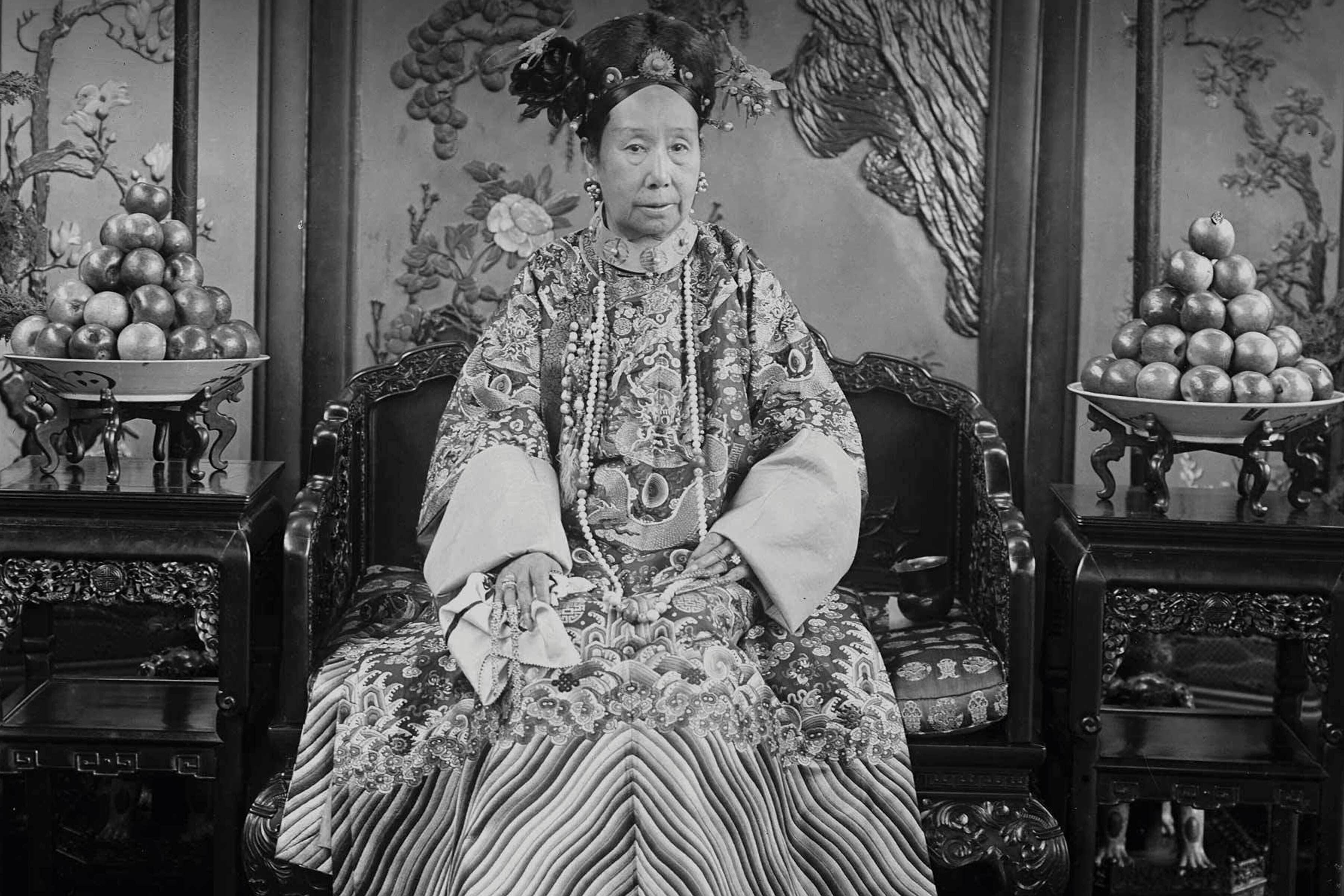The names. Hearing the names.
For me, the most powerful part of the Empresses of China’s Forbidden City exhibition hits you with your eyes closed, before you even enter the galleries. You are immersed in the sound of the names of the women…the empresses, the consorts, the dowagers…without whom there would be no emperors. Who were they? Where were they born? Who were their parents? Who knows? They were brought to the palace to be educated and reared to become an empress or consort…part of a harem. They would never return home.

Empress Dowager Chongqing at the Age of Seventy. Probably Giuseppe Castiglione (Lang Shining; Italy, 1688–1766) and other court painters, Beijing, Qianlong period, about 1761, hanging scroll, ink and color on silk, Palace Museum, Gu6452. © The Palace Museum
There is no comprehensive history of the empresses. The stories we learn, as we marvel at the women’s gold-embroidered garments and cloisonné hairpins, are pieced together, pulled like threads from the rich tapestry documenting the lives of the men of the Forbidden City.
Empress Dowager Chongqing at the Age of Seventy. Probably Giuseppe Castiglione (Lang Shining; Italy, 1688–1766) and other court painters, Beijing, Qianlong period, about 1761, hanging scroll, ink and color on silk, Palace Museum, Gu6452. © The Palace Museum

The Qing dynasty lasted from 1644 to 1917 and this is the first exhibit to ask the question, “Who were the women?” Their primary purpose was to bear an heir to the throne. The emperor would choose his successor from among the sons of many mothers. But these women delivered more than babies. They had influence in politics, religion and art.

The Mass Cultural Council gathered at PEM for our January Council meeting and toured this amazing exhibit together, led by Curator for Exhibitions and Research, Paula Richter. Commoners were prohibited from entering the Forbidden City during the Qing dynasty.
Hairpin with figure and vase. 18th or 19th century, pearls, sapphire, coral, turquoise, kingfisher feather, and silver with gilding, Palace Museum, Gu10130. © The Palace Museum.

Yet here we all were, within arms length of precious objects, jewels and artifacts, tangible evidence of the lives of women hidden in history yet for us larger than life. We saw their portraits, their faces, the make-up mirror through which they saw their own reflections.

It’s easy to be entranced by the intricacy, beauty and elegance of these treasures from the Palace Museum – some actually from our own PEM. But what makes them stick with you, in your head and in your heart even after you’ve left the galleries, are the stories. Like most exhibitions, the labels on the walls and display cases tell us the facts. But knowing how much more we want to know, and without diaries and documents, the curators helped us imagine the lives of the women. They suggested just snippets, moments of a day, enough to give us a peek into the past and let us fill in the rest ourselves.


Take a seat in the palanquin and be carried through the streets. Look out the window at a film of the scene. See it. Feel it in your stomach. Imagine the relationship between the empress and emperor. Know it through the heartfelt poetry of a grieving widower.
Marvel at the brilliant color of the silks and embroidery on the cloaks and robes. It seems as if they were pulled from the closet for the first time today. We’re told that what we are admiring will be rotated with other robes and cloaks to prevent deterioration from the light.

In fact, it was not uncommon for an empress to order half a dozen of a single garment, wear each just one once and then store them away in the dark.
Festive robe with bats, clouds, and the character for longevity. Probably Imperial Silk Manufactory, Nanjing (weaving), and Imperial Workshop, Beijing (tailoring), Qianlong period, 1785 or earlier, patterned silk satin and embroidery, polychrome silk and metallic-wrapped threads on silk fabric, Palace Museum, Gu42136. © The Palace Museum.

Like the stories of the women of the Forbidden City. Kept in the dark for centuries. Now in the light. Brilliant.

Empresses of China’s Forbidden City is on view at PEM until February 10, 2019.
Keep exploring
Collection
Chinese Art

Blog
Piece by Piece
5 min read


